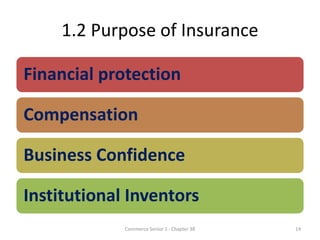The Basic Principles Of Pacific Prime
Some Known Facts About Pacific Prime.
Table of ContentsAn Unbiased View of Pacific PrimeNot known Factual Statements About Pacific Prime Facts About Pacific Prime RevealedWhat Does Pacific Prime Mean?
In a lot of states, the insurance company is required to send you a copy of the adjustments to your plan. It is crucial that you check out Recommendations or Bikers so you understand just how your policy has altered and if the plan is still adequate to meet your demands. To get a duplicate of your insurance plan, please call your insurance representative or firm.
The Institute of Medication (IOM) Board on the Effects of Uninsurance launches an extensive examination of proof that addresses the value of medical insurance coverage with the magazine of this report. Insurance coverage Issues is the first in a collection of 6 reports that will certainly be released over the next 2 years recording the truth and effects of having actually an estimated 40 million people in the USA without wellness insurance policy coverage.

The Basic Principles Of Pacific Prime
The objective of this collection of studies is to refocus policy attention on a historical problem. Complying with the lengthiest economic development in American history, in 1999, an approximated one out of every six Americans32 million grownups under the age of 65 and greater than 10 million childrenremains without insurance (Mills, 2000).

10 percent of the populace accounts for 70 percent of healthcare expenses, a correlation that has continued to be continuous over the previous 3 decades (Berk and Monheit, 2001) - international health insurance. Thus medical insurance continues to serve the function of spreading out danger also as it significantly funds routine care. From the perspective of wellness care carriers, insurance carried by their people helps secure a revenue stream, and communities take advantage of monetarily sensible and steady healthcare experts and institutions
Government provides medical insurance to populaces whom the exclusive market might not offer effectively, such as disabled and senior citizens, and populaces whose accessibility to wellness care is socially valued, such as youngsters and expectant ladies. The supreme ends of wellness insurance coverage for the individual and neighborhoods, including workplace communities of employees and employers, are boosted health and wellness end results and high quality of life.
Not known Factual Statements About Pacific Prime
Employees rate medical insurance first without a doubt in value amongst all the benefits supplied in the work environment (Salisbury, 2001). There have actually been large financial investments of personal and public funds to offer wellness insurance policy, numerous individuals still have no protection. In spite of considerable coverage of study findings and healthcare research results, the general public stays overwhelmed and misinformed regarding Americans without wellness insurance policy and the implications of lacking protection.

Without doubt, the complexity of American healthcare funding mechanisms and the riches of resources of details add to the general public's complication and uncertainty concerning medical insurance statistics and their interpretation. This report and those that will comply with goal to boil down and provide in conveniently understandable terms the comprehensive research study that bears upon questions of health insurance coverage and its value.
Fifty-seven percent of Americans surveyed in 1999 thought that those without health and wellness insurance policy are "able to obtain the treatment they require from doctors and healthcare facilities" (Blendon et al., 1999, p. 207). In 1993, when nationwide interest was concentrated on the troubles of the without insurance and on pending health care regulation, just 43 percent of those polled held this belief (Blendon et al., 1999).

They additionally obtain less precautionary services and are much less likely to have regular treatment for persistent conditions such as hypertension and diabetes. Persistent illness can cause expensive and disabling difficulties if they are not well taken care of (Lurie et al., 1984; Lurie et al., 1986; Ayanian et al., 2000). One national survey asked greater than 3,400 adults concerning 15 very significant or dark conditions.
An Unbiased View of Pacific Prime
Added evidence is offered later on in this phase in the discussion of insurance coverage and access to health treatment. https://penzu.com/p/79996ae8dade0171. Individuals without medical insurance are young and healthy and pick to do without protection. Practically half (43 percent) of those evaluated in 2000 thought that people without medical insurance are more probable to have health troubles than people with insurance coverage
Voters and policy manufacturers in focus team discussions identify those without insurance policy as youths that have the chance to be covered and feel they do not require it (Porter Novelli, 2001). Compared to those with a minimum of some personal protection, the without insurance are much less most likely to report remaining in exceptional or great health and wellness (Firm for Healthcare Study and Top Quality, 2001).
SOURCE: Center for Price and Funding Studies, Firm for Healthcare Research and High quality, based upon MEPS data. Young grownups in between 19 and 34 are far much more likely to lack health insurance coverage than any other age group. This is chiefly due to the fact that they are much less usually qualified for employment-based insurance coverage as a result Home Page of the nature of their work or their brief period in it.
The assumption that individuals without insurance coverage have better-than-average health follows from confusing the fairly young age profile of the uninsured with the better health, usually, of younger persons. This covers the link in between health and wellness status and medical insurance. For those without accessibility to office medical insurance, poor health is a potential barrier to purchasing nongroup coverage because such protection may be very valued, leave out pre-existing problems, or be just unavailable.